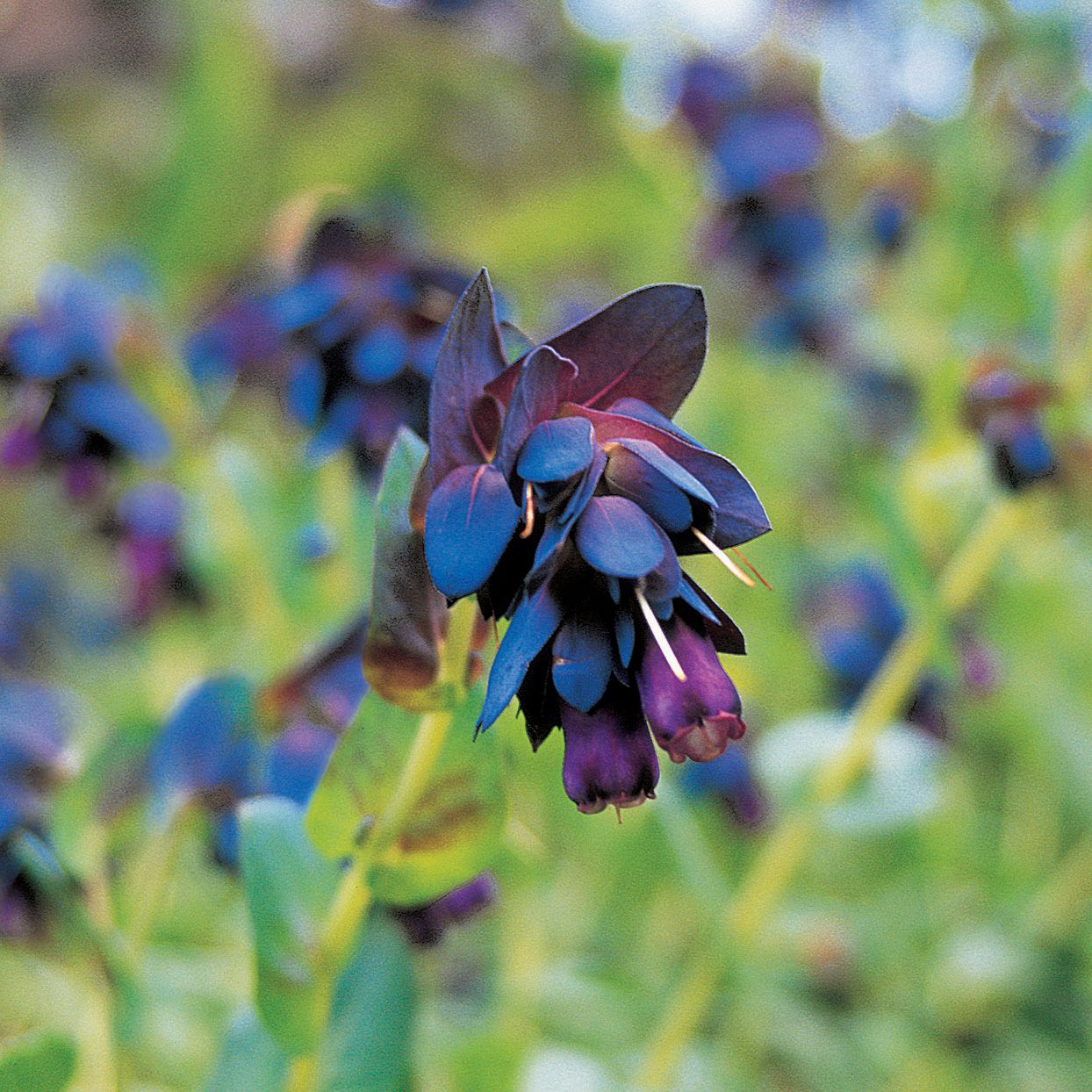
Dharaseeds
Honeywort Seeds - Purple
Estimated delivery between February 04 and February 07.
Honeywort (Cerinthe purpurascens), also known as the purple honeywort, is a stunning and unique annual plant that adds a splash of color and attracts pollinators to the garden. With its distinct purple-blue tubular flowers and succulent-like foliage, Honeywort is an excellent choice for gardeners looking for an ornamental plant that also benefits local wildlife. This plant thrives in various conditions, making it a versatile and easy-to-grow addition to any garden.
Key Benefits
- Attractive Flowers: The rich purple-blue flowers are tubular and hang in clusters, adding vibrant color to garden beds or containers.
- Pollinator-Friendly: Honeywort is particularly attractive to bees, hummingbirds, and other beneficial insects, supporting a healthy garden ecosystem.
- Versatile Growing Conditions: This plant is adaptable to different soil types and can grow in both full sun and partial shade.
- Low Maintenance: Honeywort is easy to grow, requiring minimal care and attention, making it a great choice for beginners or busy gardeners.
- Edible Leaves: In addition to being ornamental, the leaves of Honeywort are edible and have a mild, succulent flavor, adding a unique touch to salads.
Plant Features
- Plant Characteristics: Honeywort has thick, fleshy leaves with a blue-green tint, and its striking purple flowers bloom in drooping clusters. The plant's overall form is compact and bushy, making it ideal for containers or garden borders.
- Size: Grows to about 12–18 inches (30–45 cm) in height, with a spread of 12–14 inches (30–35 cm).
- Growth Habit: Honeywort has a bushy growth habit with arching stems that support the beautiful clusters of flowers.
Planting Instructions
Planting Season
- Honeywort thrives when planted in early spring, after the danger of frost has passed. It can also be sown in late summer for a fall bloom in warmer climates.
Planting Details
- Planting Depth: Sow seeds about 1/4 inch deep.
- Spacing: Space plants 10–12 inches apart to allow room for their spreading habit.
- Soil Requirements: Prefers well-drained, moderately fertile soil with a pH of 6.0–7.0. It can tolerate poor soil, making it an excellent option for less-than-ideal garden spots.
- Sunlight: Honeywort thrives in full sun to partial shade. It is particularly well-suited to areas with afternoon shade in hot climates.
Care Instructions
- Watering: Water regularly, keeping the soil moderately moist but not soggy. Once established, Honeywort is somewhat drought-tolerant, but occasional watering during dry periods will encourage more abundant blooms.
- Fertilization: Honeywort does not require heavy feeding. Apply a balanced, slow-release fertilizer in the spring to encourage healthy growth.
- Weeding and Mulching: Keep the area around the plant free of weeds. A layer of mulch will help retain moisture and reduce weed competition.
- Pruning: Deadhead spent flowers regularly to encourage continuous blooming throughout the growing season.
- Pest and Disease Control: Honeywort is generally pest-resistant but can occasionally attract aphids or snails. Regularly check the plant for pests, and use organic treatments as necessary.
Harvesting
- Maturity: Honeywort typically begins flowering in early summer and continues to bloom through the fall.
- Method: While primarily grown for its ornamental flowers, Honeywort's leaves can be harvested as well. Cut the flowers and leaves once they are mature, but avoid cutting too much at once to allow the plant to continue producing.
Storage
- Short-Term: Honeywort flowers and leaves are best used fresh. They can be stored in the refrigerator for a few days if necessary.
- Long-Term: For dried arrangements, hang the flowers upside down in a cool, dry place. The leaves can be dried for culinary use but should be stored in an airtight container away from light and moisture.
Culinary Uses
- Edible Leaves: The succulent, blue-green leaves of Honeywort can be used in salads or as a garnish. Their mild, slightly sweet flavor makes them an interesting addition to fresh dishes.
- Flowers: While the flowers are mainly ornamental, they can be used in floral arrangements or as an edible decoration for cakes and desserts.
Conclusion
Honeywort is a beautiful and versatile plant that combines ornamental value with ecological benefits. Its stunning purple flowers and easy-to-grow nature make it a perfect choice for gardeners of all skill levels. Whether planted in garden beds, containers, or hanging baskets, Honeywort will attract pollinators while adding vibrant color to your garden. Plus, with edible leaves and a low-maintenance care regimen, it’s an excellent choice for gardeners looking for beauty and function in one plant.








